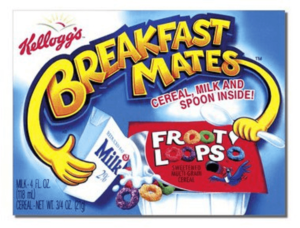While designing the marketing approach for different products and services, marketers need to analyse how consumers are going to see the products and services. In other words, marketers need to understand what matters most to consumers: Acceptability, Affordability, Accessibility and Awareness. Together these are called 4A of marketing.
It also means that marketers must understand and ensure that not only consumers are aware of the product but also that the product is affordable, accessible and acceptable to them.
The 4A framework is a tool that helps marketers align their actions with the four essential values sought by customers. These values can be summarized as:
- Acceptability: the extent to which the firm’s total product offering meets and exceeds customer expectations. It has two dimensions: functional acceptability and psychological acceptability.
- Affordability: the extent to which customers in the target market are able and willing to pay the product’s price. It has two dimensions: economic affordability (ability to pay) and psychological affordability (willingness to pay).
- Accessibility: the extent to which customers are able to readily acquire and use the product. It has two dimensions: availability and convenience.
- Awareness: the extent to which customers are informed regarding product characteristics, persuaded to try it, and, if applicable, reminded to repurchase it. It has two dimensions: brand awareness and product knowledge.
Benefits of the framework
- Enables true customer centricity
- Helps improve marketing productivity and accountability
- Enables more effective resource allocation
- Takes a holistic view of business success
- Provides clear managerial prescriptions
Understanding 4A via Kelloggs case
Kellogg launched Breakfast Mates, a product that had cereal, milk, a bowl and a spoon in single packaging to target working parents with small children in August 1998. The company wanted the product to be convenient and something that the people can eat in a go.
The product had many parts and thus wasn’t as convenient to the consumers as the company marketed it to be. On the contrary, there were portable breakfast bars available in the market that could be easily consumed. Americans believed that vacuum-sealed milk was artificial and not nutritious and also did not like the taste of warm milk. In response, Kellogg started selling the product in the refrigerator section, which caused the cereal to be cold.

Analysing the product through the lens of 4 As of marketing:
- Acceptability: Customers had two unpalatable choices: warm milk and warm cereal or cold cereal and cold milk.
- Affordability: The cost/serving came out to be around $1.39 and only $0.21 out of a regular box of cereal.
- Accessibility: People did not usually look for breakfast in the refrigerated section; thus, the product had low accessibility.
- Awareness: Consumers were aware of the product due to excessive marketing
Moreover, Kellogg offered four cereal options, and customers could not choose the type of milk to be included in the package (e.g. 1%, 2% or skim). So Not surprisingly, Breakfast Mates was a big failure. One year and $30 million later, Kellogg discontinued the offering.
Understanding 4A via Ford case
Ford launched Thunderbird in 1954 as the epitome of a classic American automobile. Ford relaunched it in 2001 as a retro vehicle that harkened back to the T-Bird’s 1950s and 60s glory days. It was a highly anticipated launch but it sold 19,000 in the first year and then the sales declined. The reasons for the Thunderbird’s failure become clear when looked at through the 4A lens.
The hype was created around the vehicle and this lead to initial high demand but then Ford ran into production issues and delayed shipments to dealerships, frustrating potential customers. It was competing with premium brands and enjoyed psychological acceptability within consumers. Soon, technical and functional issues came up and they overpowered the earlier psychological acceptability. The parts used in the car looked cheap and customers felt that many parts were copied from other ford vehicles. It appeared that they were buying a luxury car with common parts. The car was not enough sporty in look and not too strong and also not practical enough to serve as anything else. The car was discontinued in 2005.
You might also like to read on IKEA entry into China
[wpforms id=”320″ title=”true”]

